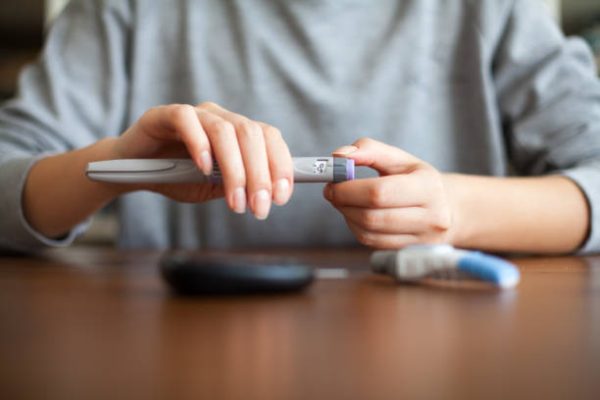Diabetes / Blood Sugar
What is type 2 diabetes?
Insulin is a hormone produced by the pancreas. Your body’s cells do not respond to insulin correctly if you have type 2 diabetes. As a result, your pancreas responds by producing more insulin.
This produces a spike in blood sugar, which can lead to diabetes. High blood sugar levels, if not properly managed, can lead to a variety of major health issues, including:
renal failure
illness of the heart
loss of eyesight
People above the age of 45 are more prone to develop type 2 diabetes.
According to the National Institute of Diabetes and Digestive and Kidney Diseases (NIDDK), more young adults, teenagers, and children have been diagnosed with the disease in recent years.
Diabetes affects nearly 37 million individuals in the United States, according to the Centers for Disease Control and Prevention (CDC). Type 2 diabetes affects 90 to 95 percent of people surveyed.
If diabetes isn’t monitored and managed on a regular basis, it might lead to major health concerns. Changes in your lifestyle can make a significant difference in how well you manage your blood glucose levels.
Symptoms and signs
Symptoms of type 2 diabetes appear gradually, sometimes over several years. That’s why it’s critical to be aware of the signs and symptoms of diabetes and to have your doctor prescribe blood sugar tests on a frequent basis.
According to the American Diabetes Association (ADA), the following are some of the most prevalent indications and symptoms of type 2 diabetes:
waking up numerous times throughout the night to pee (urinate)
Always thirsty, always hungry, your vision is hazy, you experience numbness or tingling in your hands or feet, you are always lethargic or extremely tired, and your skin is particularly dry
Skin cuts, scratches, and sores take a long time to heal.
Complications
Skin Problems
A poorly managed diabetes might raise the risk of bacterial and fungal skin infections.
One or more of the following skin signs can be caused by diabetes-related complications:
Styes on your eyelids irritated hair follicles itching rashes, blisters, or boils
Follow your diabetes treatment plan and practise good skin care to reduce your risk of skin issues. The following items are included in a good skincare routine:
- cleaning and moisturising your skin
- inspecting your skin for injuries on a regular basis
- Make an appointment with your doctor if you experience symptoms of a skin issue. Rashes, for example, might be indicators of other health problems, including type 2 diabetes.
Loss of vision
Uncontrolled diabetes can increase your risk of getting a variety of eye diseases.
According to the CDC, trusted sources include:
Glaucoma develops when pressure builds up in your eye; cataracts grow when the lens of your eye becomes clouded; and retinopathy develops when blood vessels in the back of your eye are damaged.
These disorders can lead to eyesight loss over time. Early detection and treatment, on the other hand, can help you keep your eyesight.
Make sure to arrange frequent eye exams in addition to sticking to your diabetes treatment regimen. Make an appointment with your eye doctor if you detect any changes in your vision.
Type 2 diabetes management suggestions
These pointers can assist you in managing type 2 diabetes:
- Monitor your blood pressure, blood sugar, and cholesterol readings on a regular basis and, if you smoke, consider quitting.
- Focus on nutrient-dense diets and avoid those high in saturated fat and sugar.
- If your doctor has indicated it, work for a reasonable weight, engage in daily physical activity, and remember to take your prescription medications
- Work with your doctor to develop a diabetes management strategy.
- Learn more about managing your type 2 diabetes treatment by enrolling in a diabetic education programme, which is covered by Medicare and most health insurance policies.


